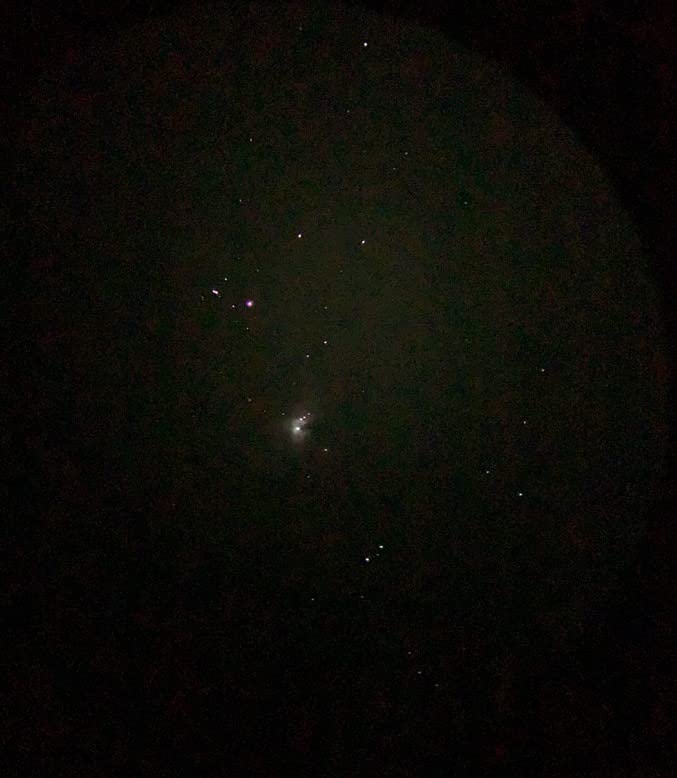Product Description
Celestron 25x70 SkyMaster Porro Prism Binoculars
High-Powered Binoculars for Astronomy & Long-Range Viewing
The Celestron 25x70 SkyMaster Binoculars are designed for serious stargazers and long-distance observers, offering exceptional brightness, clarity, and magnification. Whether you're scanning the night sky, spotting wildlife, or observing distant landscapes, these binoculars provide an immersive viewing experience.

Key Features & Benefits
Powerful 25x Magnification
✔ High 25x magnification delivers detailed close-ups of celestial objects, wildlife, and distant landscapes.
Large 70mm Objective Lenses for Superior Light Gathering
✔ Bright and clear images, even in low-light conditions such as twilight or stargazing.
✔ Maximizes image brightness and clarity for stunning views of the Moon, planets, and deep-sky objects.
Premium Optical Performance
✔ Multi-coated optics enhance light transmission and reduce glare, producing crisp, contrast-rich images.
✔ BaK-4 prisms provide superior clarity and colour fidelity.
Durable & Comfortable Design
✔ Rugged rubber-armoured housing for a secure grip and protection from impacts.
✔ Long eye relief makes them comfortable for eyeglass wearers.
✔ Large center focus knob for smooth and precise focusing.
Perfect for Tripod Mounting
✔ Tripod adapter included for stable, hands-free extended viewing sessions.
✔ Great for long-exposure stargazing and terrestrial viewing.
Convenient & Travel-Friendly
✔ Includes a protective carrying case for safe storage and transport.
Ideal For:
✔ Astronomical Viewing: Observe craters on the Moon, planets, star clusters, and nebulae.
✔ Terrestrial Use: Perfect for wildlife observation, ship spotting, mountain viewing, and long-distance scenery.
✔ Low-Light Conditions: Excellent for dawn, dusk, and night sky observations.
Why Choose the Celestron 25x70 SkyMaster?
✔ Large objective lenses for superior brightness
✔ High 25x magnification for long-range clarity
✔ Multi-coated optics for crisp and sharp visuals
✔ Durable, rubber-armoured design for all-weather use
✔ Tripod adaptable for steady, extended viewing
A Powerful Binocular for Serious Observers
The Celestron 25x70 SkyMaster Porro Prism Binoculars offer unmatched performance at an incredible value. Whether you're an astronomy enthusiast, nature lover, or long-distance observer, these binoculars deliver outstanding optical clarity and brightness.
Get closer to the stars, nature, and distant landscapes with the Celestron 25x70 SkyMaster Binoculars—your ultimate tool for long-range observation!
| Magnification: | 25x |
| Objective Lens Diameter: | 70mm (2.75") |
| Focal Length of Objective Lens: | 279.63mm (11") |
| Angular Field of View: | 2.7° |
| Linear Field of View (@1000 yds) / @1000 m): | 141 ft (47 m) |
| Exit Pupil: | 2.8mm (.11") |
| Eye Relief: | 13mm (.51") |
| Close Focus: | 75 ft (23 m) |
| Interpupillary Distance (max): | 72mm (2.83") |
| Interpupillary Distance (min): | 56mm (2.20") |
| Diopter Adjustment Range: | -4 to +8 |
| Twilight Factor: | 41.83 |
| Relative Brightness: | 7.84 |
| Limiting Stellar Magnitude: | Ideal: 11.73 | Moderate: 10.73 | Poor: 9.73 |
| Lens Coatings: | Multi-Coated |
| Prism Glass (Type): | BaK-4 |
| Prism Coatings: | N/A |
| Weight: | 52 oz (1474 g) |
| Environmental Protection: | Water Resistant |
| Nitrogen Filled: | No |
| Tripod Adaptable: | Yes |
| Carrying Case: | Nylon |
| Dimensions: | 220mm x 110mm x 280mm (8.7" x 4.3" x 11.0") |
| Included Items: | Objective lens caps Tripod adapter Rainguard Carrying case Neck strap Lens cloth Instruction manual |
Payment & Security
Your payment information is processed securely. We do not store credit card details nor have access to your credit card information.





















